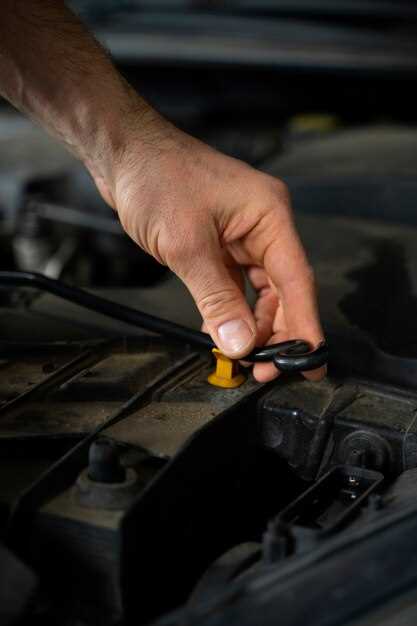
Electrical issues in vehicles can cause a range of problems, from minor inconveniences to major safety hazards. Understanding how to identify and diagnose these issues is crucial for all vehicle owners. Modern cars are equipped with complex electrical systems that control everything from starting the engine to operating the lights and audio systems. When these systems malfunction, they can lead to frustrating situations and may even compromise the vehicle’s performance.
Recognizing the symptoms of electrical problems is the first step in diagnosing the issue. Common signs include dimming lights, malfunctioning electronic accessories, or a dead battery. These symptoms often signal an underlying issue that requires attention. By being observant and knowledgeable about these indicators, vehicle owners can take proactive measures before the situation escalates.
In addition, it is essential to grasp the importance of safety when dealing with electrical systems. Working with electricity can be hazardous if not approached with caution. Proper tools, knowledge of system layouts, and an understanding of safe practices are imperative. This article will guide you through the process of diagnosing electrical problems, highlighting key methods and techniques to restore your vehicle’s functionality and ensure your safety on the road.
Identifying Common Electrical Issues and Symptoms

Electrical issues in vehicles can manifest in various ways, affecting performance and safety. Recognizing the symptoms early can prevent more extensive damage. One common issue is a dead battery, often indicated by a slow or no engine cranking sound, dimming dashboard lights, or malfunctioning electronic accessories. If the vehicle fails to start, it might signal a battery problem or a failing alternator.
Another prevalent electrical problem involves blown fuses. Symptoms include the sudden loss of power to certain electrical components, such as lights or infotainment systems. Inspecting the fuse box and replacing blown fuses can quickly restore functionality.
Troubles with the ignition system can lead to hard starts or stalling. Symptoms include the engine cranking without starting or sputtering during operation. A faulty ignition coil, bad spark plugs, or wiring issues may be culprits in these cases.
Furthermore, issues with the vehicle’s lighting systems may arise. Flickering, dim, or completely non-functional headlights or taillights often indicate a short circuit or a faulty connection. Checking the bulbs and wiring can help pinpoint the issue.
Lastly, malfunctioning sensors, such as the Mass Airflow Sensor or Oxygen Sensor, can cause poor fuel efficiency and performance issues. Warning lights on the dashboard, decreased acceleration, or noticeable changes in engine sound can suggest sensor-related problems.
Utilizing Diagnostic Tools for Accurate Troubleshooting
In modern vehicles, electrical systems are intricate, making them prone to various issues that can affect performance and safety. Utilizing diagnostic tools is essential for precise identification and resolution of electrical problems. These tools enable technicians to assess the vehicle’s electrical systems systematically, ensuring effective troubleshooting.
One of the most common diagnostic tools is the OBD-II scanner. This device connects to the vehicle’s onboard diagnostics port and retrieves error codes that indicate where malfunctions may be occurring. By interpreting these codes, technicians can focus their attention on the specific components or systems that require further investigation.
Multimeters are also critical in diagnosing electrical issues. They measure voltage, current, and resistance, allowing for detailed analysis of circuits. With a multimeter, technicians can check battery health, investigate wire integrity, and ensure proper functionality of sensors and switches.
Additionally, oscilloscopes can provide an in-depth view of electrical signals, especially in complex systems like fuel injection and ignition. These devices visualize waveforms, helping technicians identify irregularities that are not detectable with basic tools. This capability is particularly advantageous for troubleshooting intermittent problems that are hard to replicate.
Many automotive service providers now also utilize advanced diagnostic software, which offers comprehensive analysis and reporting features. These programs can simulate vehicle conditions, track system performance over time, and provide detailed data that simplifies the troubleshooting process. Integrating software with hardware tools enhances diagnostic accuracy and efficiency.
In summary, leveraging diagnostic tools such as OBD-II scanners, multimeters, oscilloscopes, and specialized software is vital for accurate troubleshooting of electrical problems in vehicles. These instruments not only streamline the diagnostic process but also ensure that repairs are targeted and effective, ultimately resulting in a safer and more reliable vehicle operation.
Steps to Resolve Electrical Faults in Automotive Systems

Identifying and resolving electrical faults in automotive systems requires a systematic approach. Begin by ensuring safety; disconnect the battery to prevent any short circuits while you work. Use appropriate personal protective equipment to safeguard against electric shocks.
Next, visually inspect all wiring and connections for signs of damage such as fraying, corrosion, or loose terminals. Pay close attention to connectors and junction points, as these are often the sources of intermittent issues.
Utilize a multimeter to test electrical components and circuits. Start by measuring voltage; a functional circuit should display the expected voltage readings. If the voltage is either too low or absent, trace the circuit back to identify potential breakpoints or damaged components.
A continuity test is essential for assessing the integrity of wires and connections. Disconnect power to the circuit and check for continuity between points. A lack of continuity indicates a break or fault along the wire.
If the initial checks do not yield conclusive results, check individual components such as fuses, relays, and switches. Replace any faulty components, taking care to use parts that match OEM specifications to ensure compatibility and reliability.
Once issues are resolved, reconnect the battery and retest the system. Monitor for proper operation and ensure all features are functioning as intended. After resolving faults, consider performing a thorough electrical system diagnostic to pinpoint any hidden issues that may not have surfaced during initial checks.
Lastly, keep records of all inspections and repairs for future reference. Documenting your findings helps track recurring problems, which can lead to better insights on preventing future electrical failures in your vehicle.





